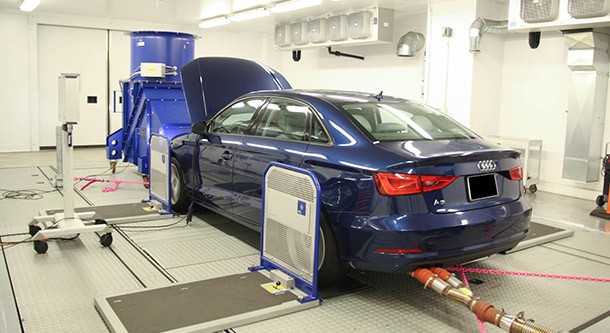Premium gas typically costs 20-25% more than regular gas, or around 50 cents more per gallon, according to 2017 data from AAA. However, this price difference can fluctuate and may be higher in certain areas. While premium gas boasts a higher octane rating, leading to potential benefits like improved fuel economy and performance, AAA research suggests these advantages are often negligible for vehicles that only recommend, but don’t require, premium fuel.
Is Premium Gas Worth the Extra Cost?
For vehicles designed to run on regular gas, using premium offers no benefit and is simply a waste of money. However, for vehicles that recommend premium gas, the answer is more nuanced. AAA testing found that under demanding driving conditions like towing or hauling heavy loads, some vehicles using premium gas saw a modest 2.7% average increase in fuel economy and a 1.4% average increase in horsepower.
 AAA graphic showing the fuel economy difference between premium and regular gasoline.
AAA graphic showing the fuel economy difference between premium and regular gasoline.
However, these marginal gains often don’t compensate for the significantly higher price of premium gas. The cost savings from improved fuel economy are usually outweighed by the extra expense at the pump.
Understanding Octane Ratings and Engine Performance
The key difference between regular and premium gas lies in the octane rating. A higher octane rating indicates the fuel’s ability to resist “knocking” or “pinging,” which are premature detonations in the engine’s cylinders.
Modern engines have knock sensors that adjust timing to prevent damage from these premature detonations. Vehicles that require premium gas are designed with higher compression ratios and advanced engine technologies that necessitate the higher octane to achieve optimal performance and prevent engine damage.
For vehicles that only recommend premium, the engine can still function safely on regular gas, but may experience slightly reduced performance under heavy loads or during aggressive acceleration.
Weighing the Pros and Cons
If your vehicle requires premium gas, using it is essential for proper engine function and longevity. If your vehicle recommends premium, the decision is more complex.
Potential Benefits of Premium Gas (for recommended vehicles):
- Slightly improved fuel economy under demanding driving conditions
- Slight horsepower increase under demanding driving conditions
- Potential for reduced engine noise under heavy load
Drawbacks of Premium Gas:
- Significantly higher cost per gallon
- Minimal benefits for everyday driving in vehicles that only recommend premium
Making an Informed Decision at the Pump
Ultimately, choosing between regular and premium gas depends on your vehicle’s requirements and your driving habits. Consult your owner’s manual for specific recommendations for your vehicle. If premium is only recommended, consider your typical driving conditions. If you rarely tow, haul heavy loads, or engage in aggressive driving, using regular gas is likely the most cost-effective choice. If you frequently drive under demanding conditions, you might consider premium gas, but weigh the potential benefits against the increased cost.
Remember to shop around for the best gas prices in your area, as prices can vary significantly between stations. Tools like the AAA Mobile app can help you locate the cheapest gas, both regular and premium. Choosing the right fuel for your vehicle can save you money without sacrificing performance.